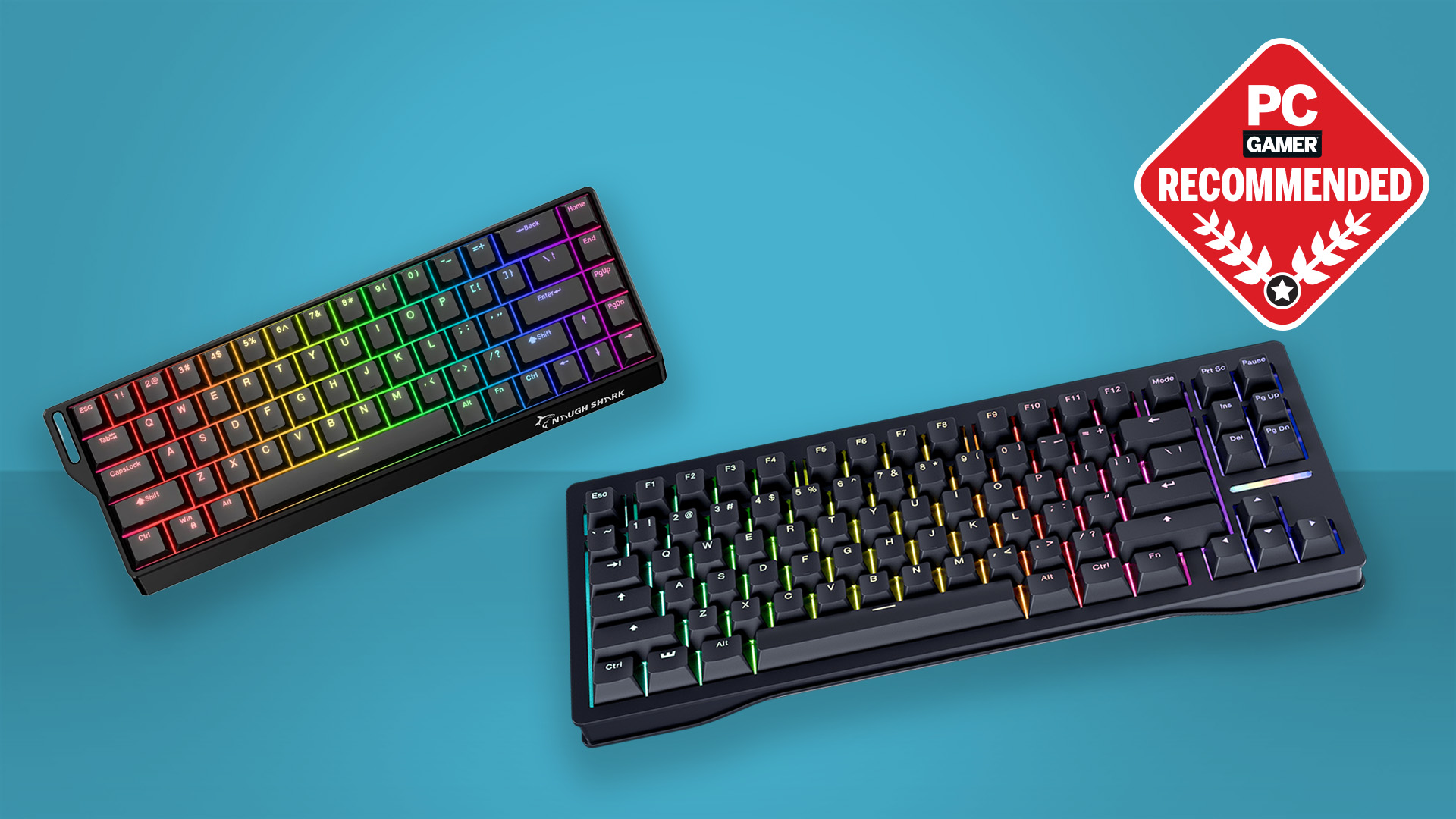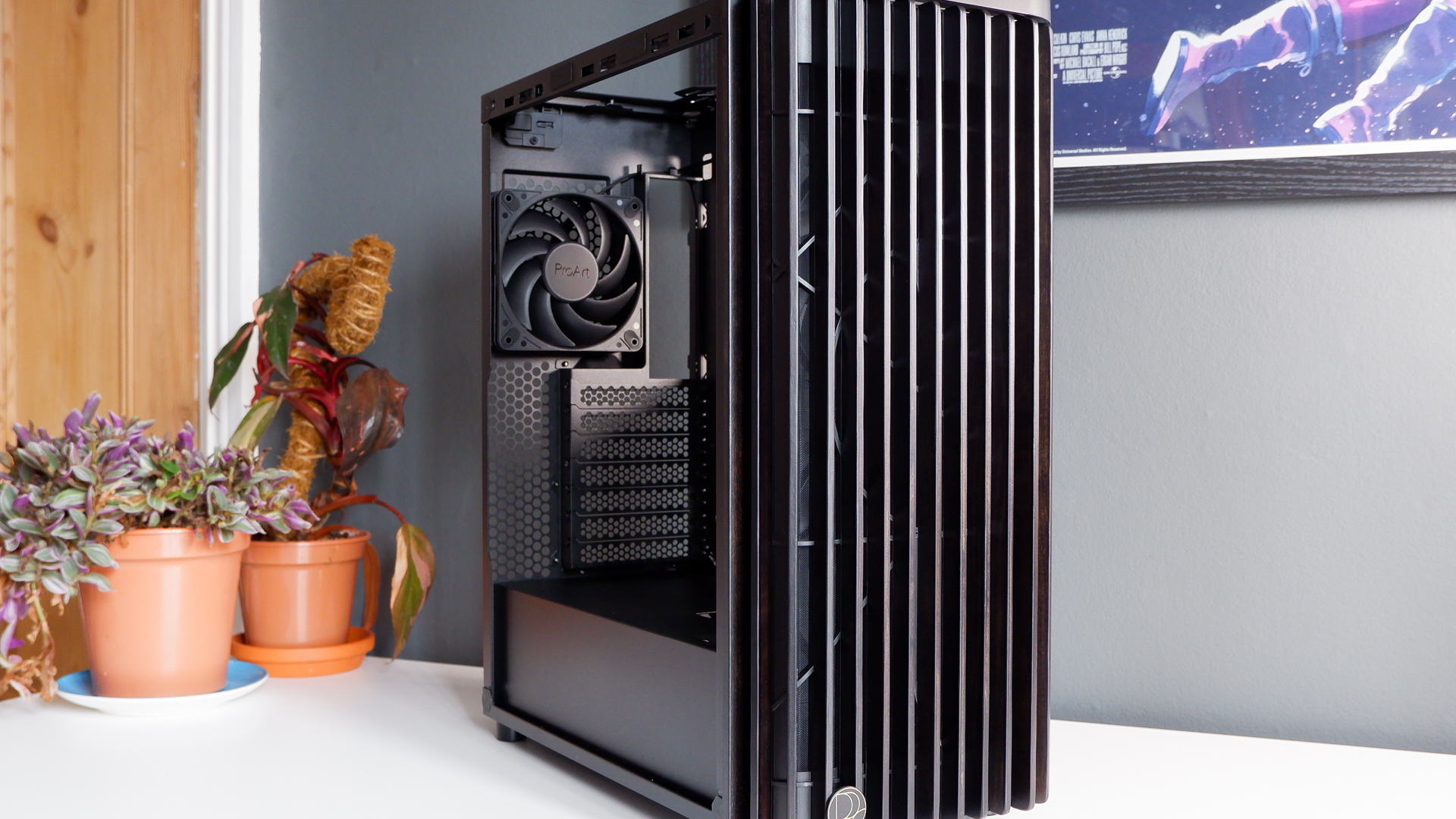Mystery RAM slots, watercooled Nvidia GPUs, and dragons galore: The MSI booth was jam packed with PC gaming gear (and crowds) at Computex 2024
So busy you could hardly breathe, but some genuinely interesting gaming hardware more than made up for it.
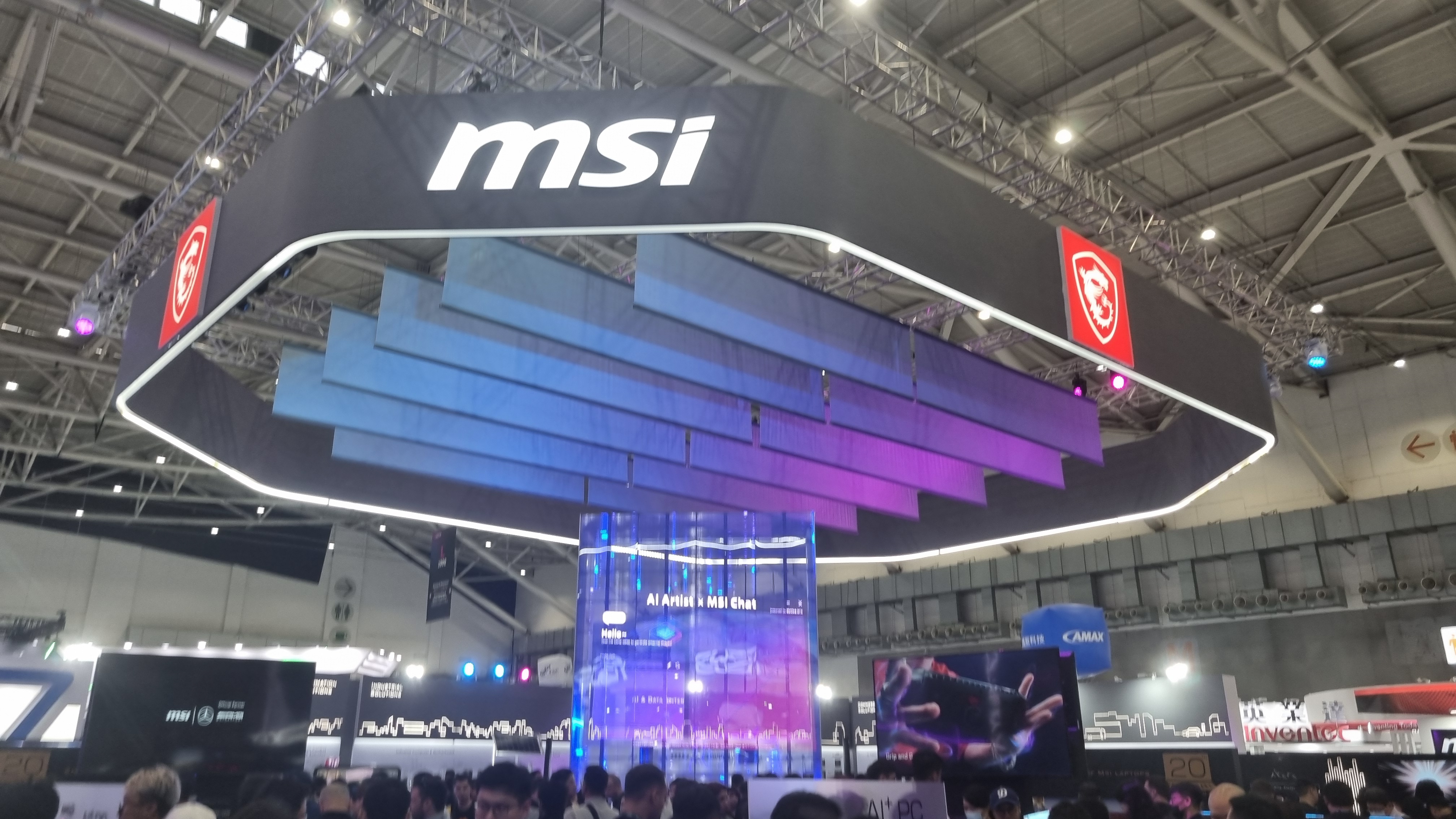
It's difficult to estimate, but based purely on eyeballing the crowd I'd say MSI's booth was one of the busiest at Computex 2024. Fighting my way through YouTubers, vloggers, Tik Tokers and some elbow-happy photographers, I've had the chance to take a tour through some hardware that seems designed to surprise.
First up, let's talk motherboards. Rear connector designs were something we were expecting to see at this years show, and MSI's Project Zero Plus—a motherboard design we've caught glimpses of before—was there in all its low profile CAMM2 glory.
However, more immediately intriguing still is an Intel 790 chipset board with an Intel and MSI co-developed "revolutionary memory solution", with the placeholder name of "Mini_CUDIMM".
The RAM slots are shorter than your average standard DIMM slot, with a big sticker over the top so you can't see the connections beneath. I thought CAMM2 was supposed to be the future of RAM, MSI? Quizzical eyebrows were raised.
These slots are also very close to the CPU socket, and it's suggested that this is to ensure the lowest latency between the chip and the memory. This, in conjunction with some enhanced power circuits, makes this board something of a technical anomaly—and hints have been made towards an increased overclocking potential.
Whatever Intel and MSI are cooking up here is intriguing, and I'll be sure to keep an eye on it over the next few months for more.
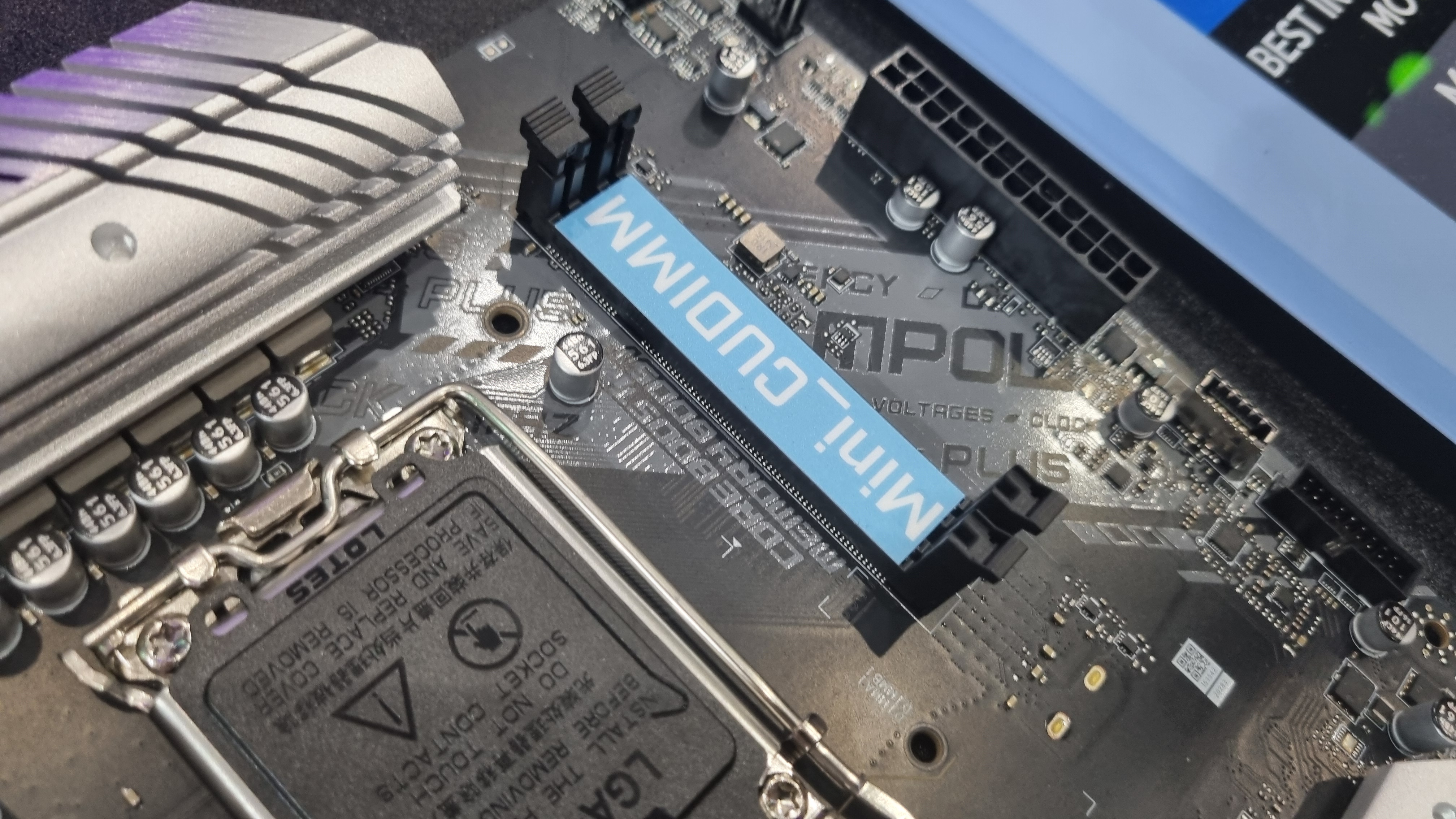
Also intriguing is a dual Gen 5 SSD M2 slot PCIe expansion card. At first I thought the XPander-Aero Slider Gen 5 (I know, terrible name) was a low-power single fan design GPU, but a quick click reveals two hidden NVMe drive holders that can be hot-swapped in and out of the rear of the card like a magazine from a pistol.
Keep up to date with the most important stories and the best deals, as picked by the PC Gamer team.
Unfortunately, I didn't get a chance to play with the mechanism properly, as some valued member of the press before me had managed to partially break it. Still, the overall design looks neat, and there is something mechanically desirable about it that made me want to try one for myself.
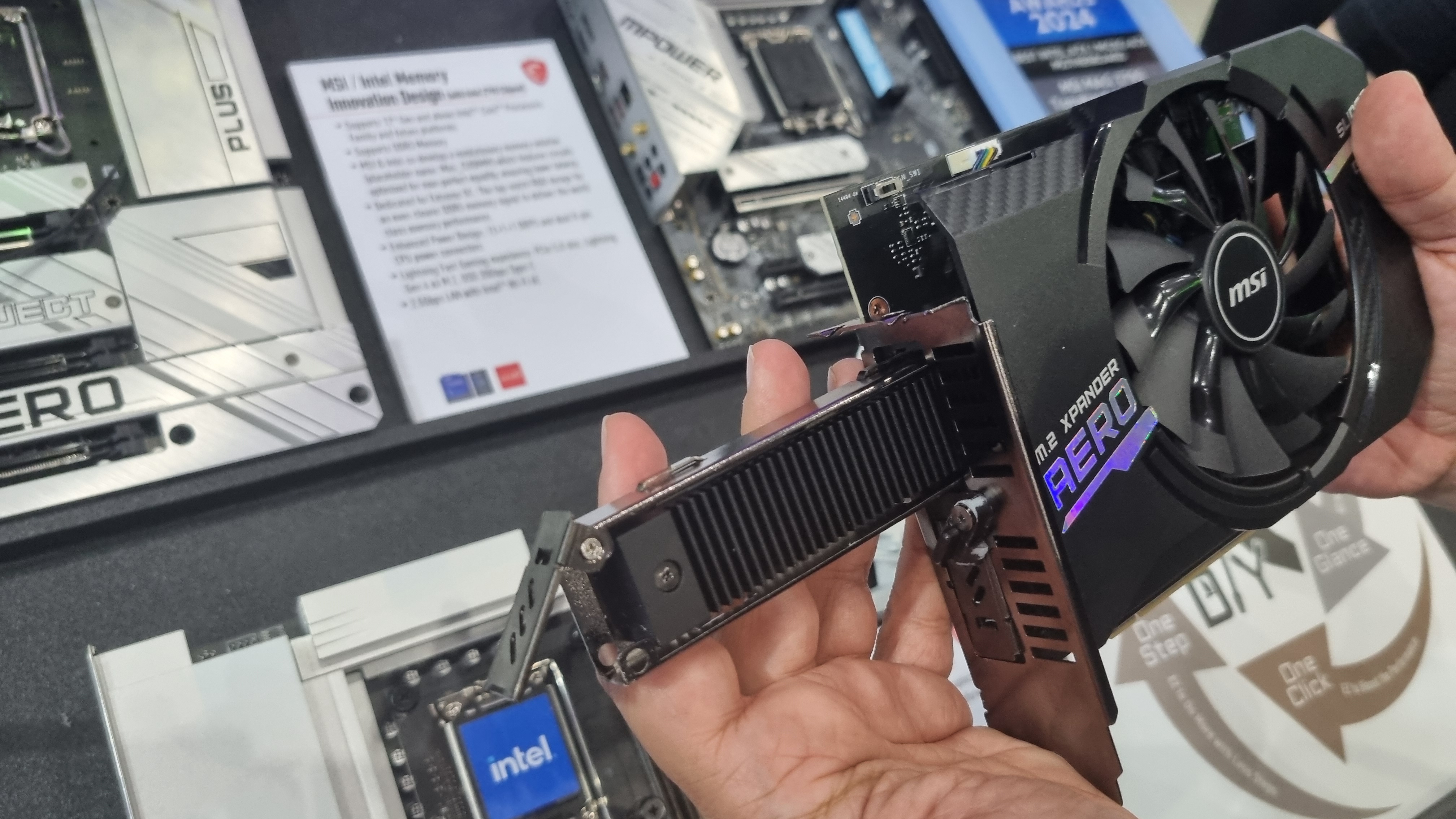
Easily swappable SSDs, in my line of work? Seems rather handy, that.
Speaking of SSD coolers, how's this for size—quite literally. We were less than impressed by Gen 5 drives with gigantic tower heatsinks at last years show. At MSI this time out, I'm shown a smaller, slimmer, translucent unit attached to a Spatium Gen 5 SSD.
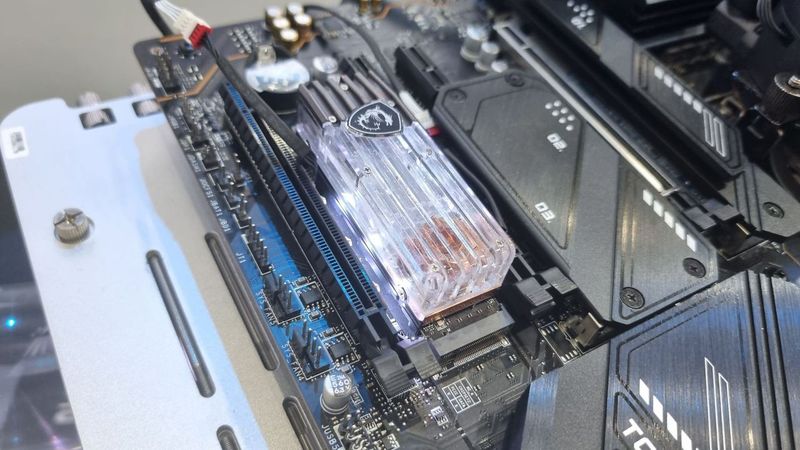
What at first looks like a bit of unusual design is actually what MSI calls a "non-metal vapor chamber" that is, apparently, extremely efficient in a similar way to the larger models. While the jury's out until we test one for ourselves, the design alone certainly looks better in person than my phonecam snaps could manage to capture.
Whether it's got the cooling goods, I'll be interested to find out. While I'm not holding my breath, at least its something a bit sleeker than some of the designs I've been shown this year.
Speaking of cooler design, perhaps my favourite piece from the whole booth is the MSI RTX 4080 Super 16G Expert Fusion. MSI hasn't exactly been known for subtle design choices over the years, but this neat, tidy and straightforward dual-slot water-cooled solution stood out for simply looking like a mean, purposeful bit of engineering.
Particularly when displayed in a black case, with zero RGB.
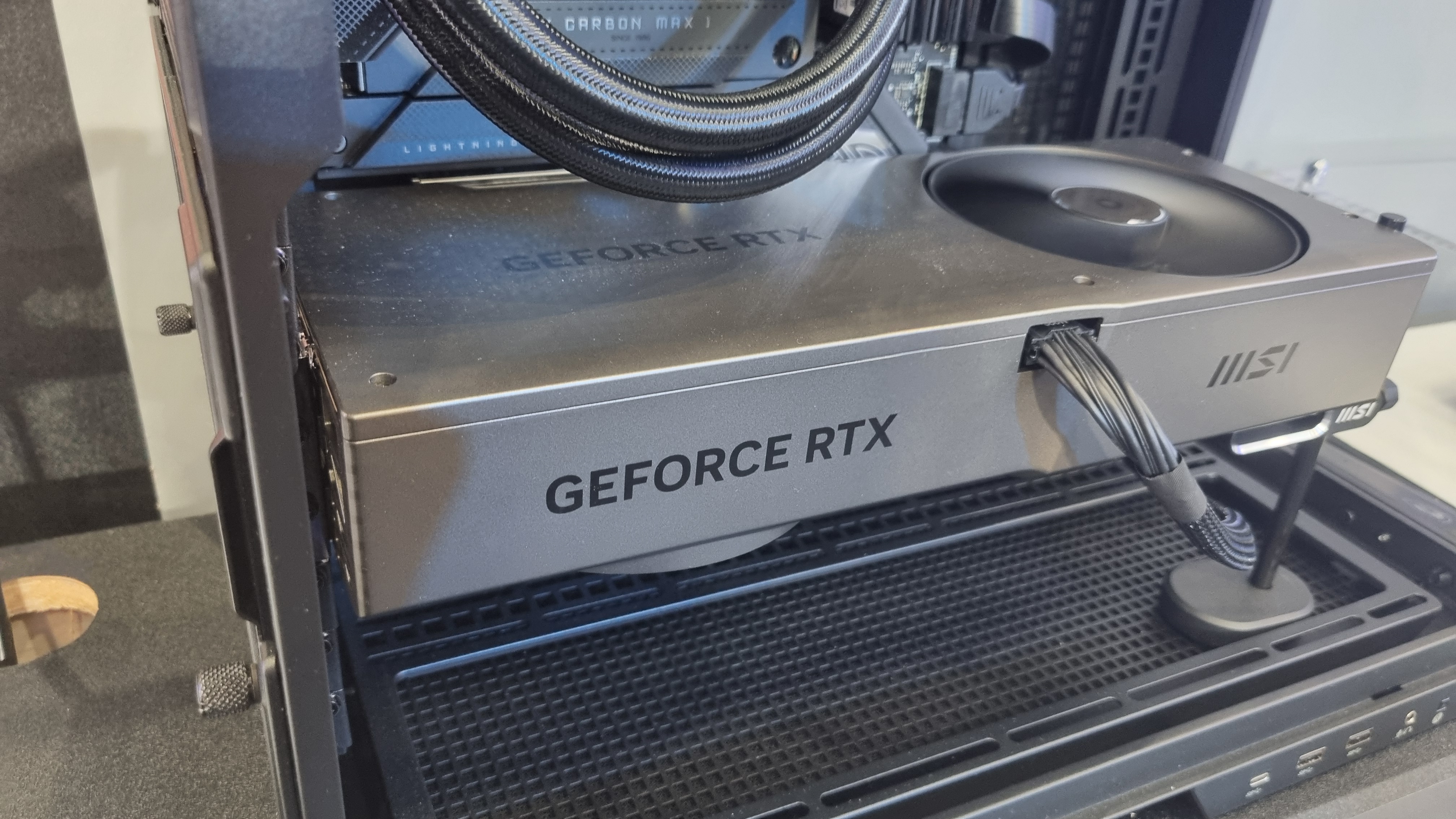
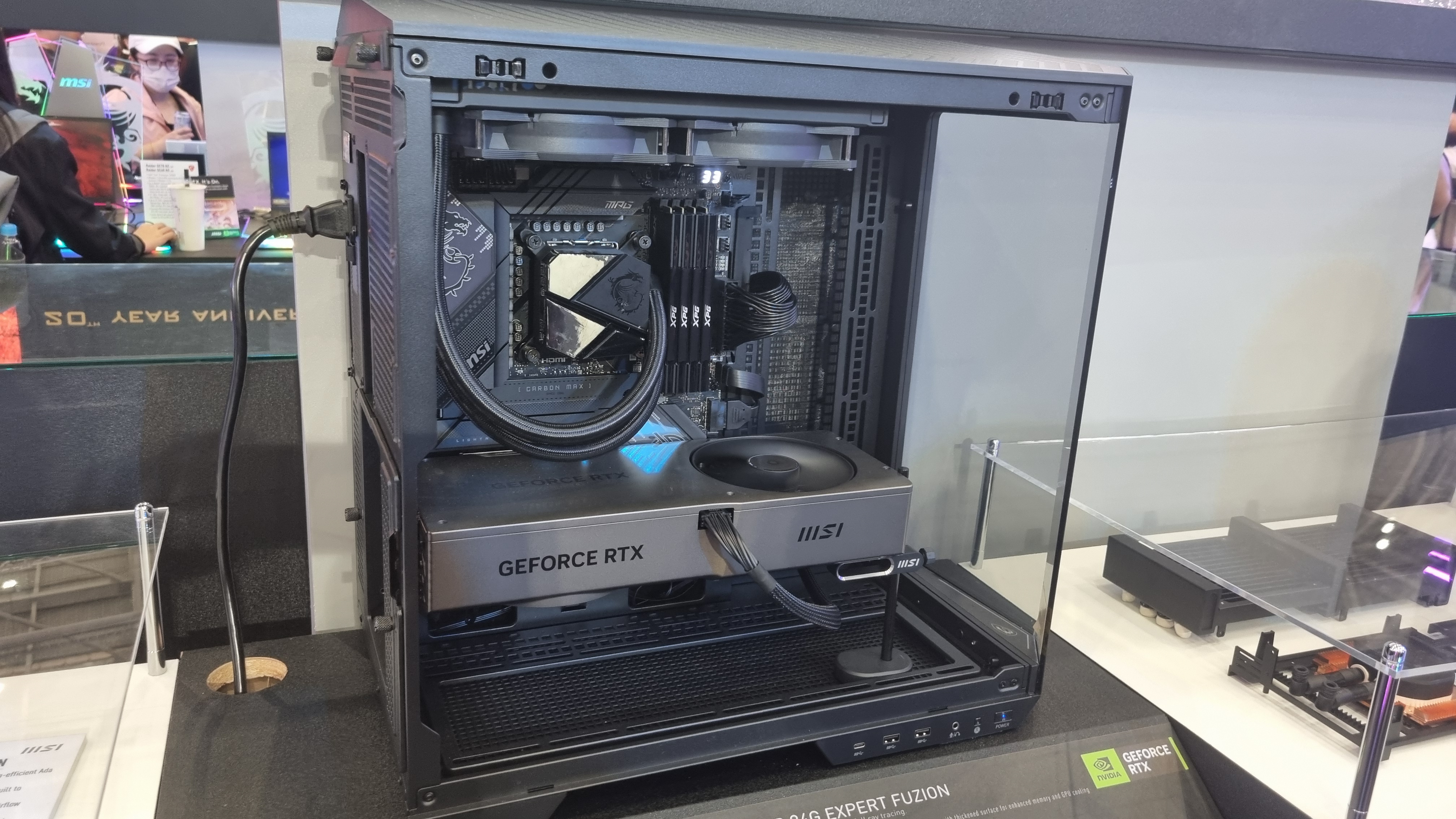
I'm also shown the RTX 4090 24G Suprim Fuzion, a water-cooled RTX 4090 solution that is a lot chunkier. The RTX 4090 seems to have proven once again that it refuses to be shrunk down to more reasonable proportions.
Remember how I said MSI's designs weren't known for being subtle? Well, there are a few dubious fan shroud designs, at least one of which was "designed by AI." Buy which I assume it means someone typed "MSI graphics card cooler design with MSI dragon" into an AI image generation tool, then 3D printed the results.
The end units are... actually, you can see for yourselves:
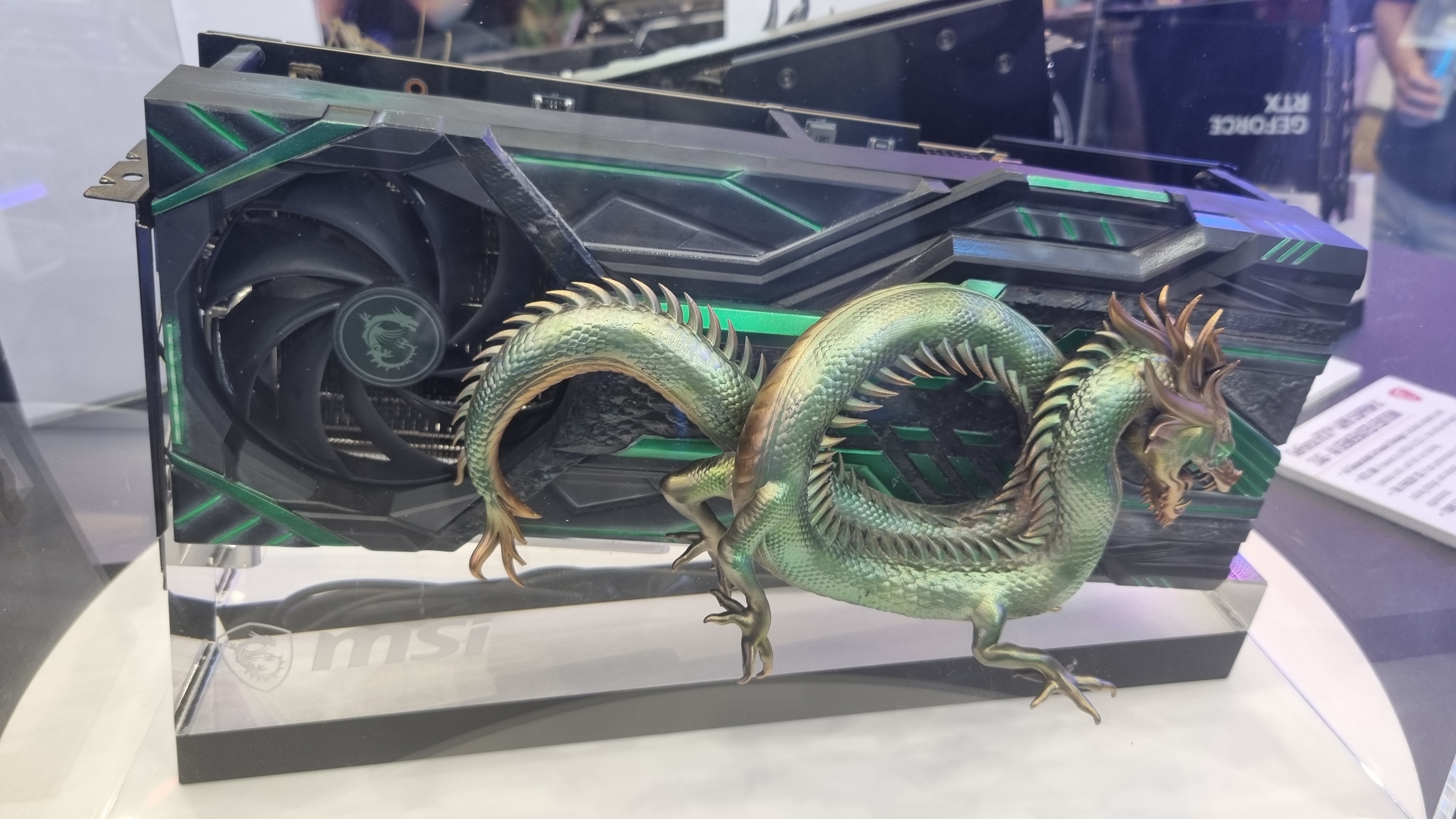

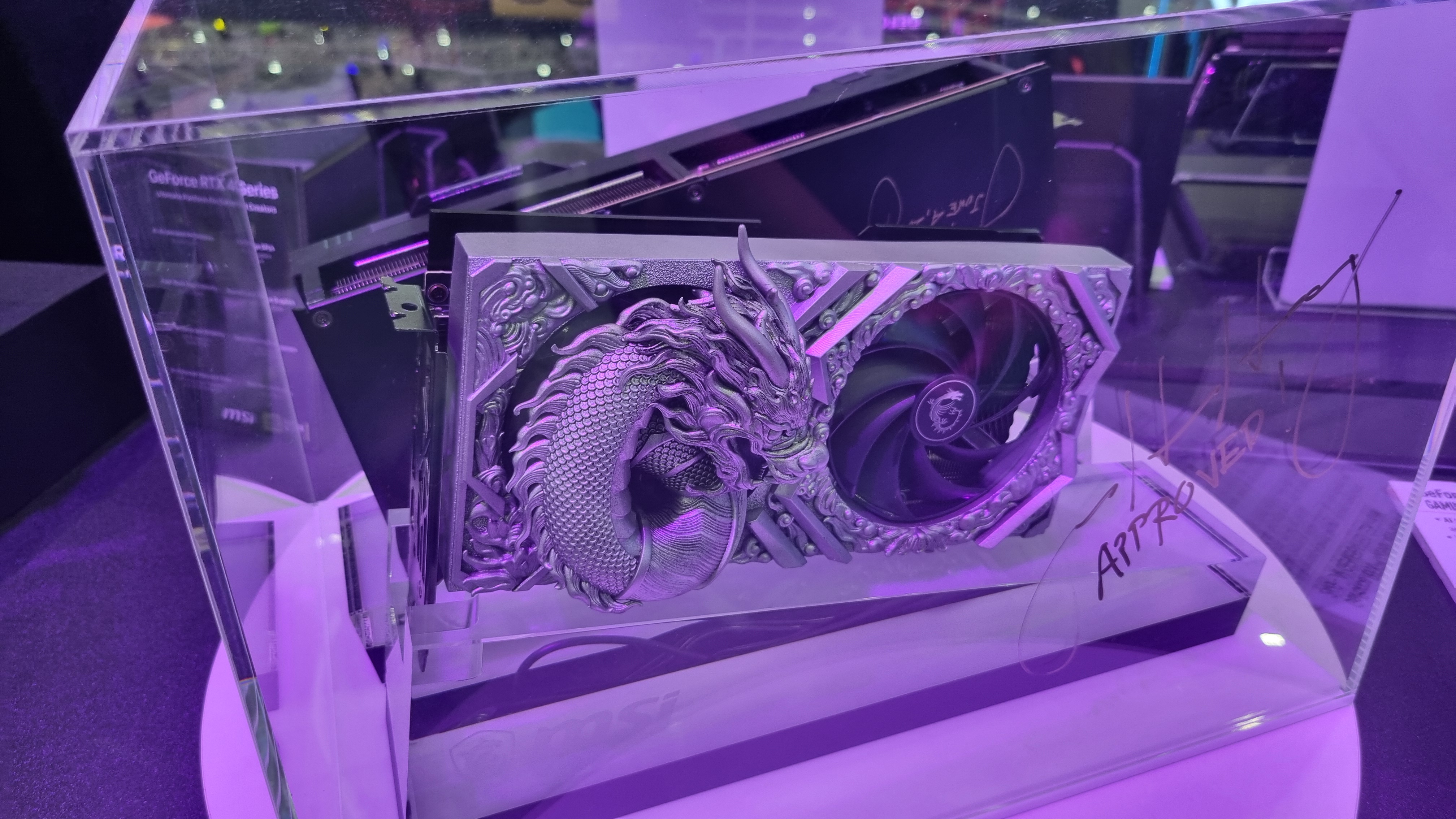
Screens in (and on) cases are something I've seen a fair bit of at this years show, and MSI's MEG Vision X AI PC might just feature the biggest of the lot. It's got a huge touchscreen taking up most of the space on the front panel, which is designed to sync with MSI's AI apps for "enhanced AI functionality".
Fair enough, but I like the potential possibilities with a touchscreen this large being integrated into the front of the case. While a smaller screen might be relegated to showing basic information like the CPU temperature, something this size strikes as having a multitude of uses.
Like keeping an eye on a Steam download, for instance. Or a chat window. It'd depend on your desk setup of course, but I like to have my PC next to me on the desk tilted slightly towards me, so there's all sorts of uses here besides the AI do-hickery.
As for the internals? Yet to be decided, it seems, or at the very least not revealed. While the AI stuff is fine, I guess, stick this screen integration into a gaming-focused rig and I reckon MSI might be on to something.
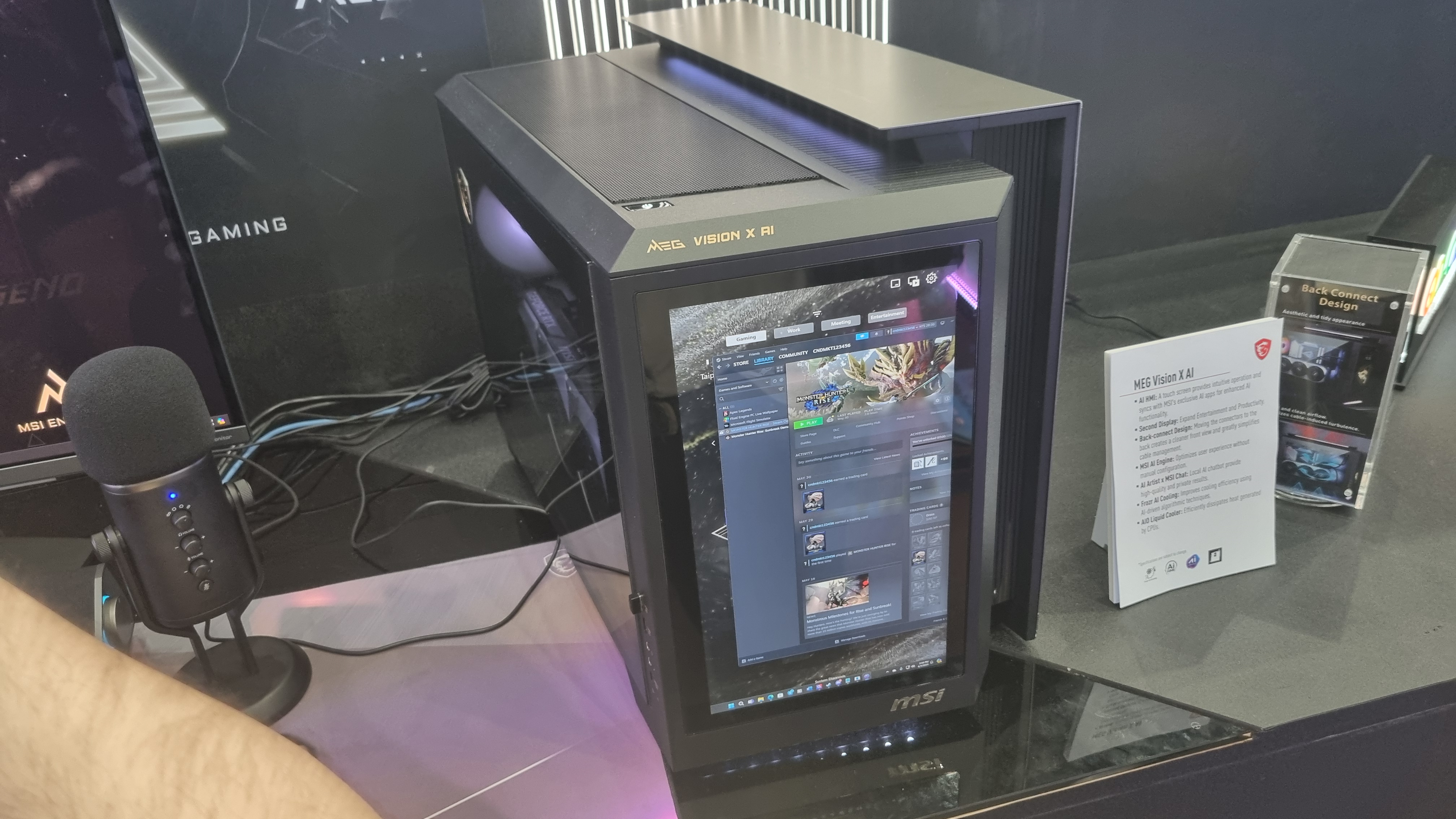
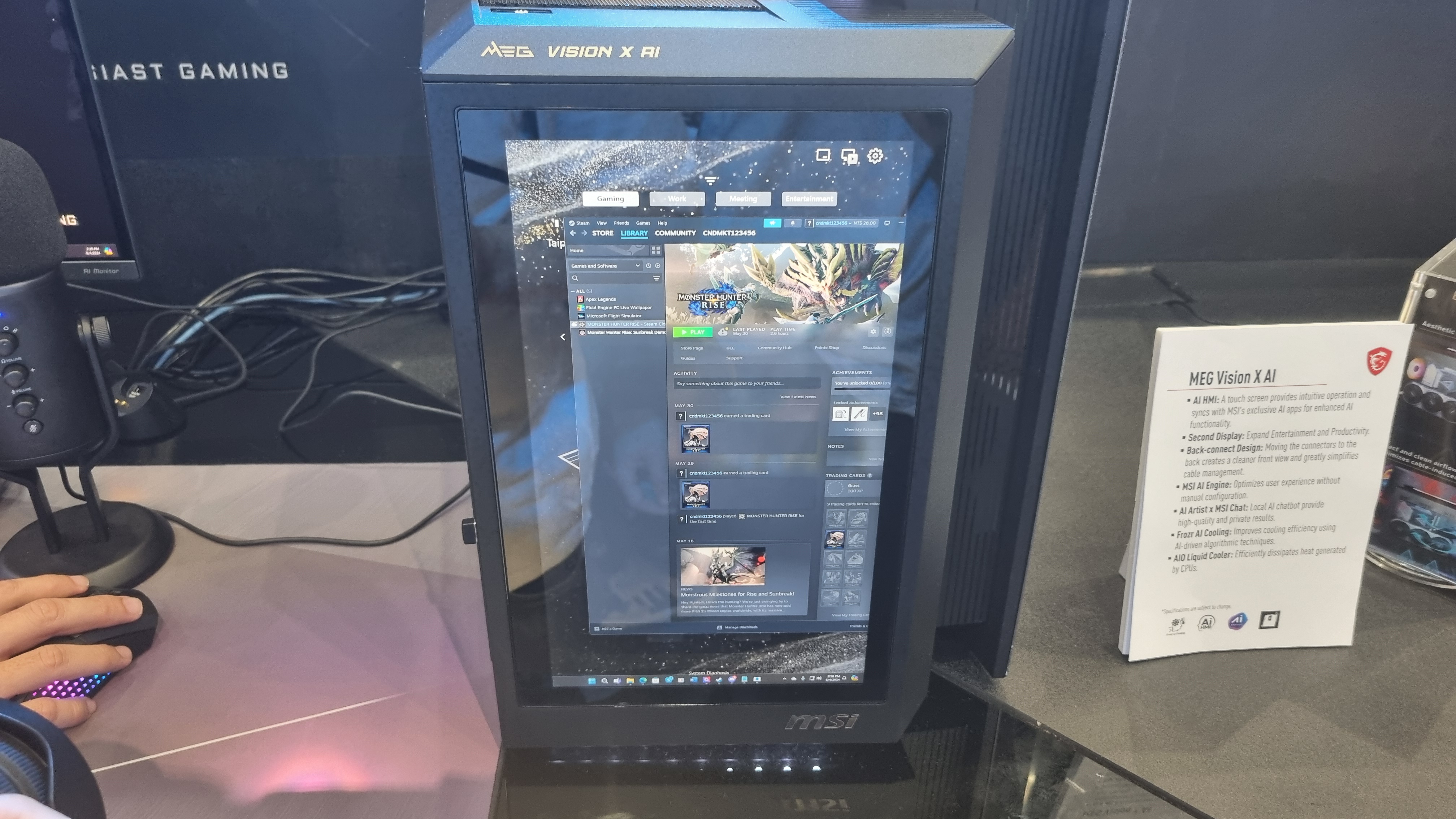
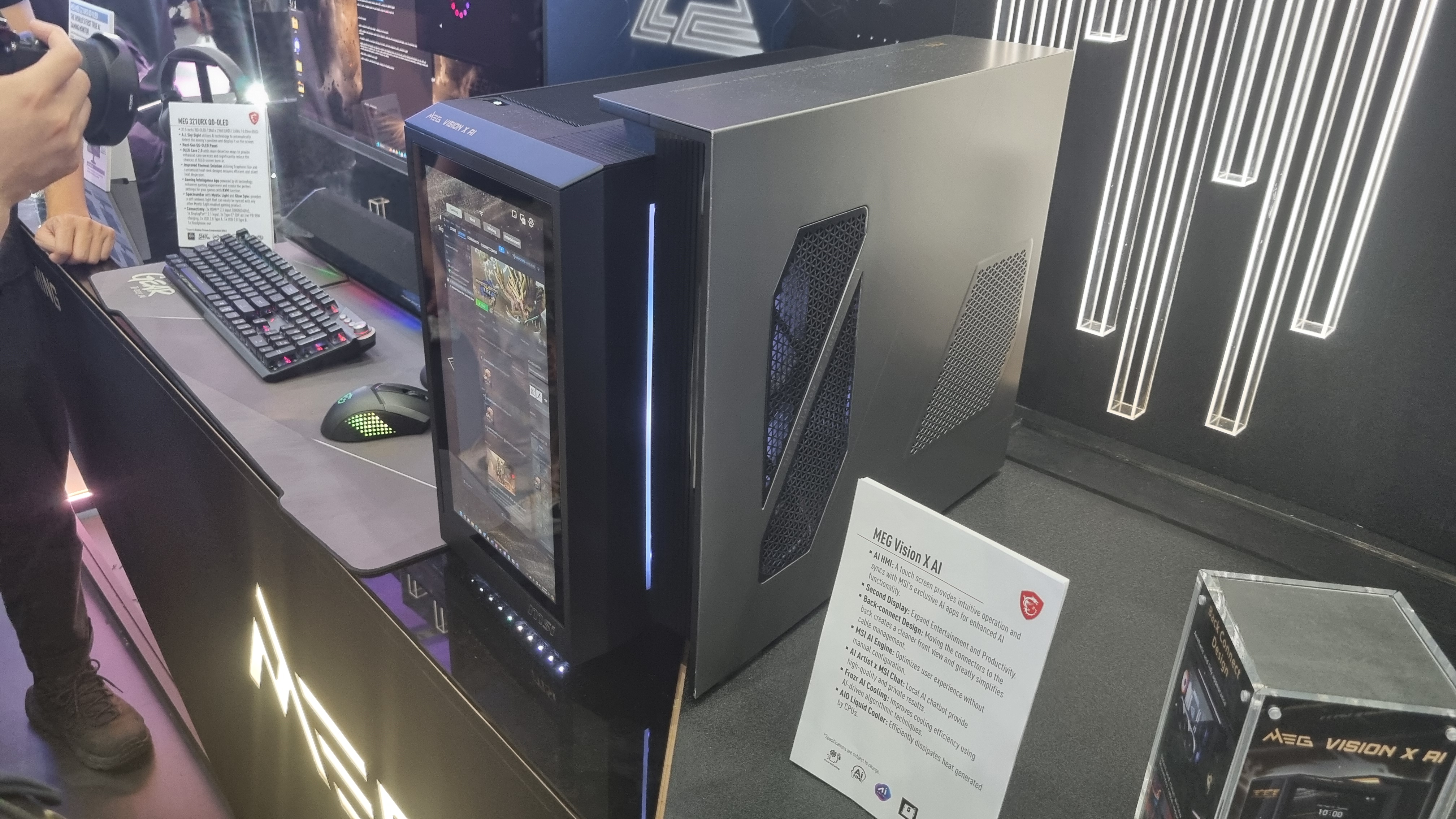
Also present is something of a controversial product, re-jigged. When I wrote about the MSI 321URX QD-OLED back when it was first unveiled at CES earlier this year, I suggested that its AI "Skysight" features may well be tantamount to cheating. In some people's eyes. Perhaps.
Well, it's back again, and it's supposedly rehabilitated. It's still got a lightbar that can show you health, ammo levels and direction of incoming fire, but I'm told after "feedback" from users and the media that its much more single player focused, rather than built to gain an edge online.
I couldn't get a clear answer on how this has been achieved—what with half of Computex attempting to elbow me in the back as I asked questions about it—but what I can say is the AI features are subtle in person, easily switched off, and potentially useful—and the panel itself looks pretty fantastic.
So then. Lots of interesting kit, from the slightly bizarre all the way through to the genuinely desirable. I could go on, of course, and and probably already have for too long. In which case, I'll simply end back where I started, with rear connectors and Project Zero.
A full Project Zero build is on display, and something about seeing it all put together really rams the concept home.
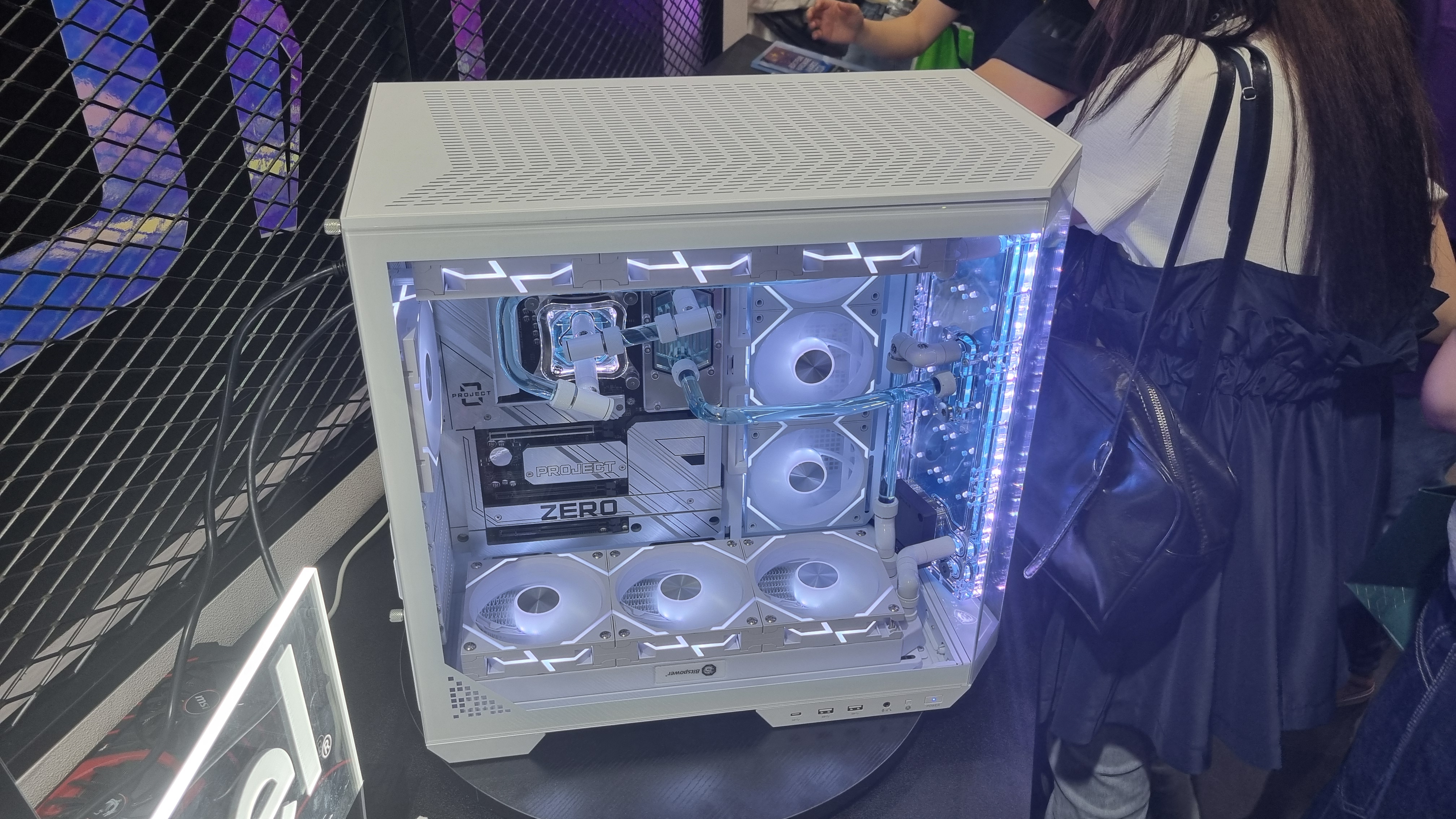
Thanks to the lack of visible cables, that CAMM2 memory, some sharply RGB-ed AIO radiators and a see-thru piping system, it really does look the bees knees.
That being said, I still wouldn't have it in white. Give me that lean, mean, watercooled RTX 4080 Super build above though, and now we're really talking.

Andy built his first gaming PC at the tender age of 12, when IDE cables were a thing and high resolution wasn't—and he hasn't stopped since. Now working as a hardware writer for PC Gamer, Andy spends his time jumping around the world attending product launches and trade shows, all the while reviewing every bit of PC gaming hardware he can get his hands on. You name it, if it's interesting hardware he'll write words about it, with opinions and everything.
